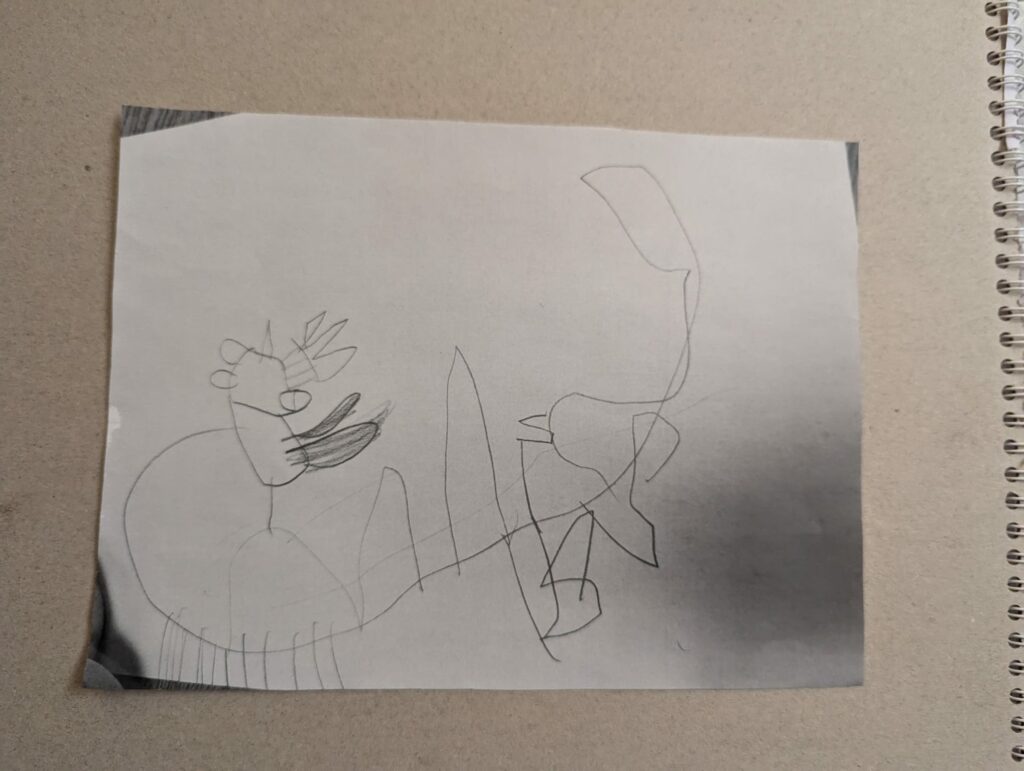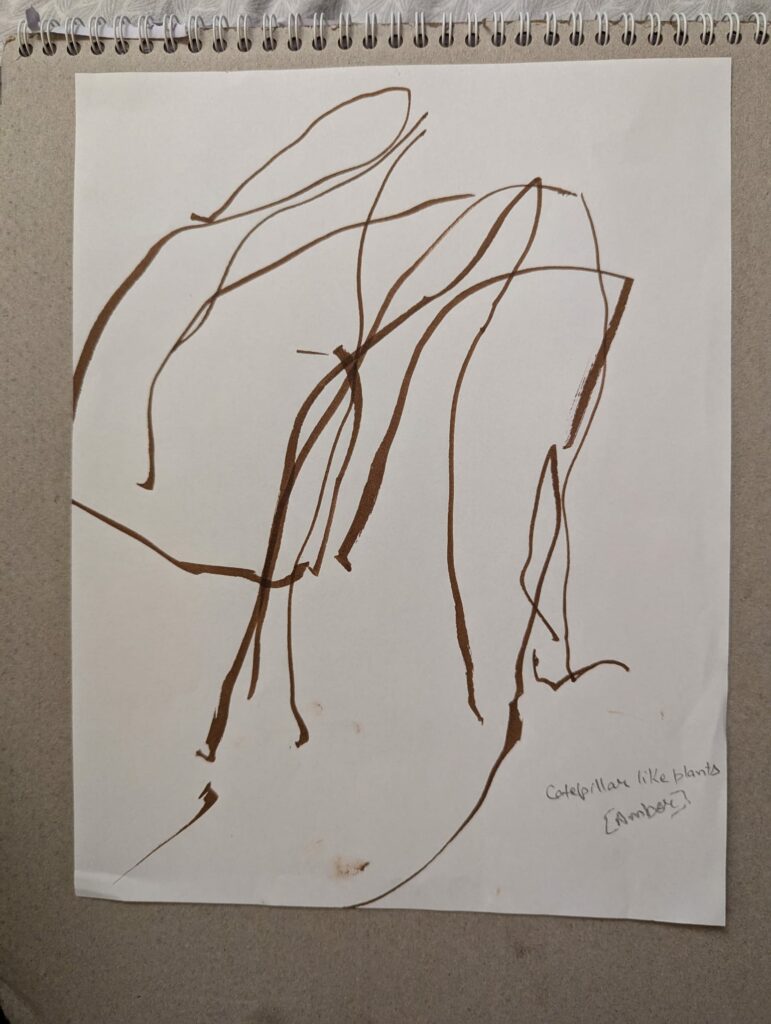How can bringing flourishing natural elements into the classroom encourage children to develop a relationship with plants that spark their curiosity about growth, care, and the interconnectedness of all living things? Additionally, how can engaging with plants inspire children to use their imagination to weave stories together as a collective work?
As I introduce plants into the classroom, my pedagogical commitment is to create an environment where children feel invited to build relationships with the natural world through both exploration and imaginative storytelling. I will offer meaningful opportunities for children to directly interact with plants, encouraging them to observe, question, and explore while also using their creativity to develop stories around what they see. Together, we will embark on a shared journey of discovery, where I position myself as a co-learner, actively participating in their inquiries and valuing their perspectives. By documenting not only their reactions and questions but also the imaginative stories they create, I aim to nurture their curiosity and sustain their engagement with nature.
During my practicum, I explored how plants can connect with children in meaningful ways. My focus was to see how introducing natural elements, like plants, into the classroom could encourage children to learn about growth, care, and the connection between living things. I also wanted to understand how these interactions could spark their imaginations and help them create stories together.
My main question was:
How can bringing plants into the classroom help children build a relationship with nature and encourage them to use their creativity and curiosity to explore and tell stories?
I wanted to create a classroom environment where children felt excited and comfortable interacting with plants. My goal was to provide opportunities for them to touch, observe, and talk about plants. At the same time, I encouraged them to use their imaginations to come up with stories based on what they noticed about the plants.
I saw myself not as an educator who gives answers but as a co-learner who explores with the children. I documented their reactions, questions, and creative ideas, and I used this process to reflect on how children develop their thoughts and curiosity about the natural world.
During my initial weeks at practicum, I introduced a plant to the children to spark their curiosity and encourage a relationship with nature. I placed the plant inside the classroom and invited them to observe, touch, and explore it. When I asked, “What is it?” their responses were diverse and imaginative.
BRYAN: It looks like a plant.
ANNABELLE: It looks like a butterfly to me.
CORB: It is a plant, and it can die in the sun.
KIERA: It is a plant. We breathed with leaves, but they got burnt during a wildfire.
BRYAN: They need water to live.
EMBER: Caterpillar lives with plants in the jungle. They eat plants. Caterpillar is happy.
KIERA: It feels so soft while touching. It has got lots of spots and there are hearts inside.
While these ideas were fascinating, later they started coming up with a plant story. We were doing it every week. One week, as I sat near the plant, a child named Corb approached me. He named the plant as “spider plant” and, using his imagination and drawing on his own, started developing a further story and brought up another plant in a story, saying it had a snake in it. This moment became a turning point. Corb’s excitement and creativity sparked a shift in the group. He started drawing his ideas, and his enthusiasm encouraged other children to join in. They began contributing their imaginative elements and collaborating on the story. The children started drawing the spider plant, the map to spider plant, the storm coming towards the spider plant, people coming to see the spider plant and dragons flying around them.














Spider Plant:
Olive: Plants begin to fly so I put them in a cage. Now the spider is wrapping up the cage.
ANNABELLE: Birds went inside the cage; the cage is not letting the birds out because they are stuck in it, and they are sad.
CORB: Birds are trying to come out, but we can’t have those birds back now and we cannot help them too because they are point and scary. They can grab people and bugs if we go near them.
CORB: butterflies are coming close to plant’s cage and plants are grabbing butterflies because plants are stronger than butterflies.
LOGAN: Now, the dragon is flying all the way to poke the plant, but he hurt his head. All the apples fallen of that tree because a dragon hit it.
CORB: Rainbow is coming down from the sun to save plant from the spider around the cage.
ANNABELLE: Plant is pretending it’s growing but it’s not because it’s still inside the cage.
Corb: There is a snake on a tree beside the spider plant and it is going to eat the spider.
Ethan: But the storm is coming towards the trees and going to take away spiders, dragon and plants.
Olive: But butterfly is turning into the caterpillar. She is going to be stronger in the storm now.
Keira: People are going into the storm to see the spider plant and monster.
The story became a shared creation, filled with imagination, teamwork, and connections to the natural world. It showed how the children used the plants as a starting point to build a rich, imaginative world.
By the end of the semester, this small moment of naming and imagining grew into a beautiful, collective story involving plants and the children’s creativity. This experience showed me the importance of being patient and open to children’s ideas. It taught me to let their imaginations lead the way, creating meaningful and collaborative learning experiences.
This experience taught me the power of curiosity and creativity in young children. By introducing plants, I saw how children connected with nature in different ways—through touch, observation, and storytelling. They were curious about how plants grow, what they need to survive, and how they fit into the bigger picture of life.
I also learned how important it is to document not just what children say but how they think and imagine. Their storytelling showed me that they see relationships between plants, animals, and even mythical creatures like dragons.
This practicum gave me a deeper understanding of how children can connect with nature and use their creativity to explore the world. Plants were not just objects in the classroom; they became part of the children’s learning and imagination. I realized how much children have to teach us when we listen to their ideas and give them space to explore.
Through this project, I strengthened my belief that relationships with nature are important in early childhood education. They help children grow curious, creative, and connected to the world around them


